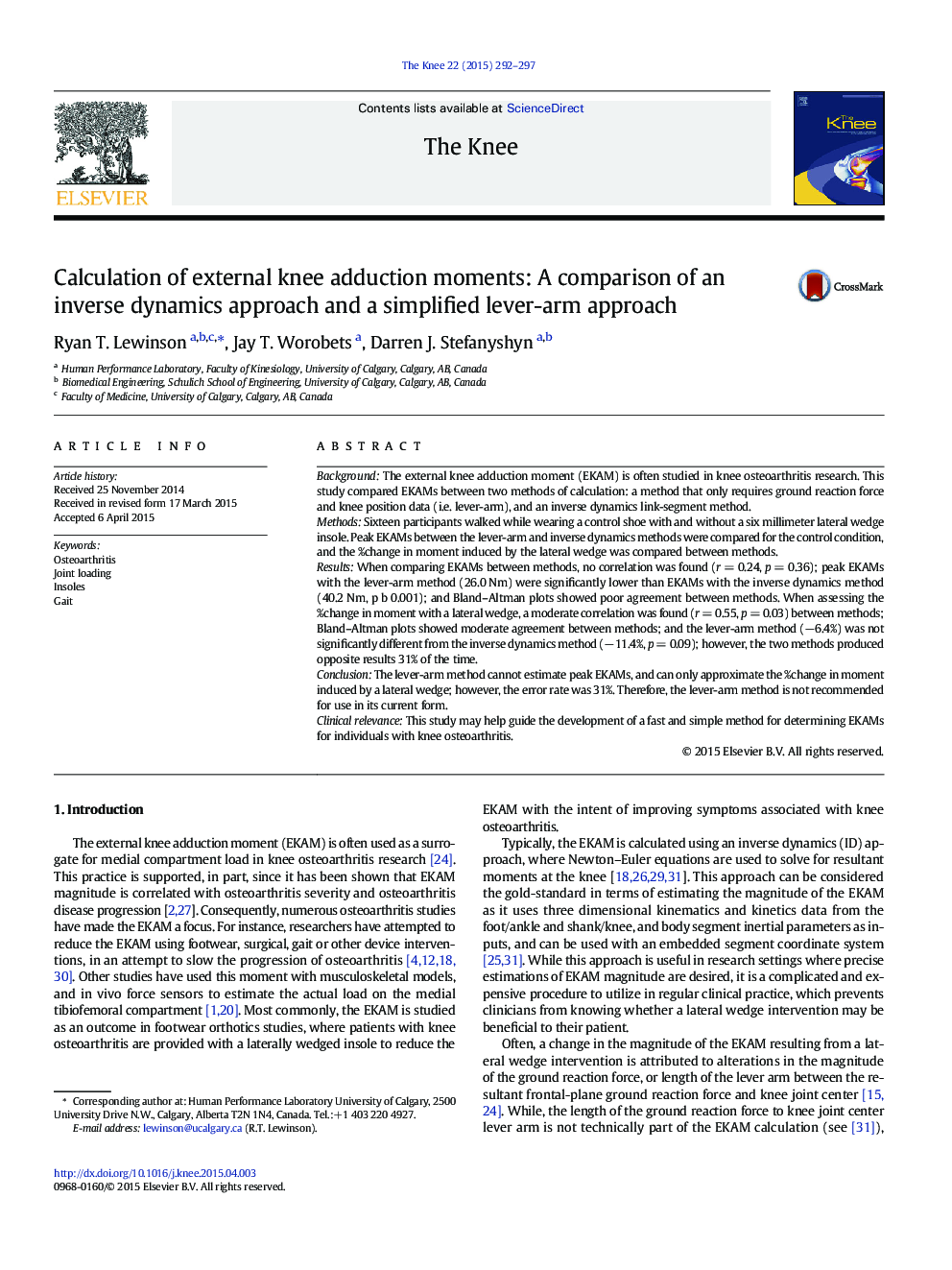| کد مقاله | کد نشریه | سال انتشار | مقاله انگلیسی | نسخه تمام متن |
|---|---|---|---|---|
| 4077251 | 1267209 | 2015 | 6 صفحه PDF | دانلود رایگان |
• Inverse dynamics is typically used to calculate the external knee adduction moment.
• A simplified lever-arm based approach has been proposed as an alternative method.
• In terms of raw knee adduction moment magnitude, the two methods were not correlated.
• In terms of magnitude change with an intervention, the two methods were correlated.
BackgroundThe external knee adduction moment (EKAM) is often studied in knee osteoarthritis research. This study compared EKAMs between two methods of calculation: a method that only requires ground reaction force and knee position data (i.e. lever-arm), and an inverse dynamics link-segment method.MethodsSixteen participants walked while wearing a control shoe with and without a six millimeter lateral wedge insole. Peak EKAMs between the lever-arm and inverse dynamics methods were compared for the control condition, and the %change in moment induced by the lateral wedge was compared between methods.ResultsWhen comparing EKAMs between methods, no correlation was found (r = 0.24, p = 0.36); peak EKAMs with the lever-arm method (26.0 Nm) were significantly lower than EKAMs with the inverse dynamics method (40.2 Nm, p b 0.001); and Bland–Altman plots showed poor agreement between methods. When assessing the %change in moment with a lateral wedge, a moderate correlation was found (r = 0.55, p = 0.03) between methods; Bland–Altman plots showed moderate agreement between methods; and the lever-arm method (−6.4%) was not significantly different from the inverse dynamics method (−11.4%, p = 0.09); however, the two methods produced opposite results 31% of the time.ConclusionThe lever-arm method cannot estimate peak EKAMs, and can only approximate the %change in moment induced by a lateral wedge; however, the error rate was 31%. Therefore, the lever-arm method is not recommended for use in its current form.Clinical relevanceThis study may help guide the development of a fast and simple method for determining EKAMs for individuals with knee osteoarthritis.
Journal: The Knee - Volume 22, Issue 4, September 2015, Pages 292–297
